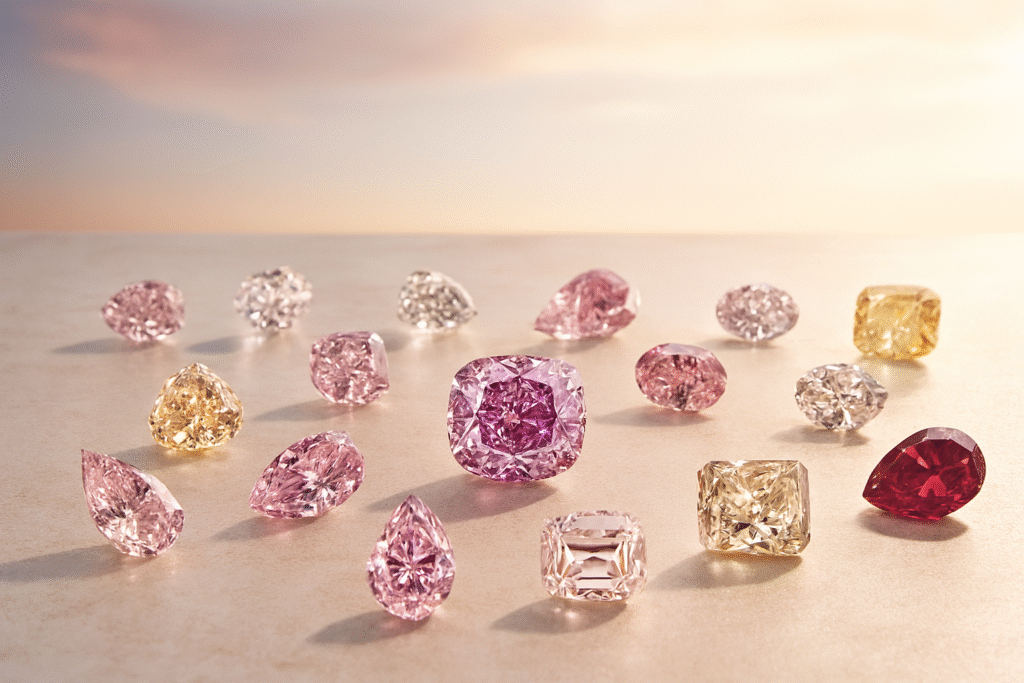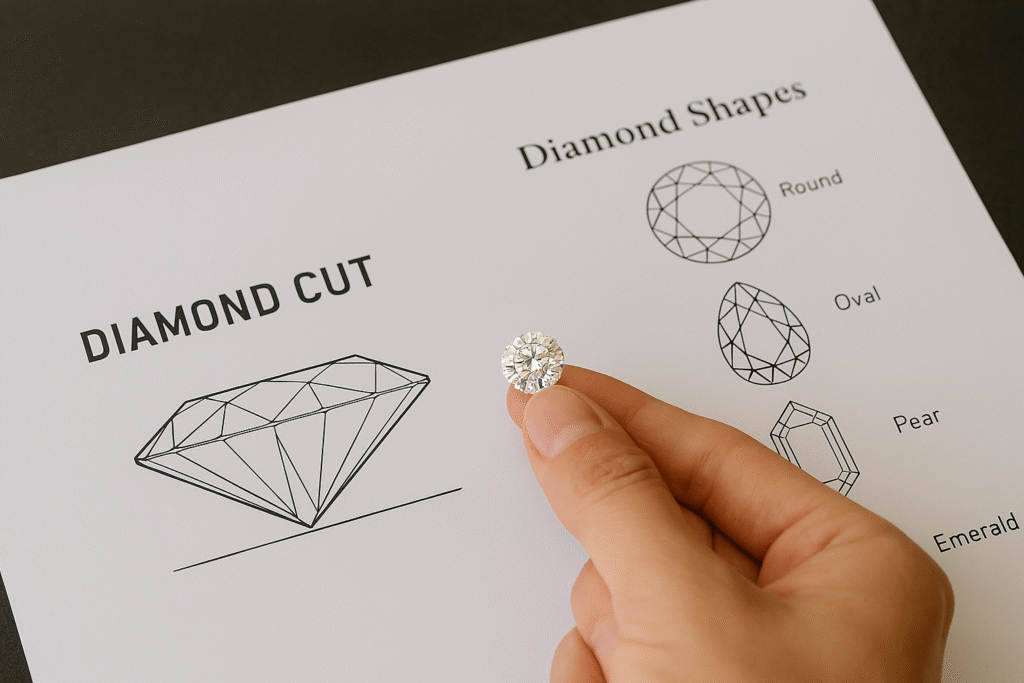The Final Beyond Rare Tender by Rio Tinto marks a historic moment in diamond history. Titled Into the Light, this last Art Series includes 52 lots of rare diamonds from the Argyle Mine in Australia and the Diavik Mine in Canada.
Why the Final Beyond Rare Tender Matters
The Argyle mine closed in 2020, ending production of its famous pinks and reds. The Diavik mine will end in 2026, making this Final Beyond Rare Tender one of the last opportunities to acquire such stones. Collectors, investors, and jewelers see these diamonds as both cultural treasures and financial assets.
- Six curated Masterpieces represent the best of Argyle and Diavik.
- 39 single diamonds and 7 sets complete the tender.
Patrick Coppens of Rio Tinto said:
“It is hard to overstate the importance of this final collection from two extraordinarily beautiful places on earth.”
For background, read about the history of Argyle mining or explore practical diamond buying tips for collectors
Highlights of the Collection
- Argyle diamonds: 1 Fancy Red, 12 Fancy Violet, 76 Fancy Pink/Purple-Pink.
- Diavik diamonds: 2 Flawless D-Colour whites (5.11 ct Emerald, 3.02 ct Pear), plus a 6.12 ct Fancy Vivid Yellow.
Learn more about the science behind the guide to understanding diamond color. For market insights, see market insights on colored diamonds.
FAQ on the Final Beyond Rare Tender
Q: Why are Argyle pink diamonds so valuable?
A: Less than 0.1% of Argyle production were pinks, and demand has surged by over 500% in 20 years.
Q: When do bids close?
A: October 20, 2025, after exhibitions in Hong Kong, Australia, and Antwerp.
Q: What makes Diavik diamonds unique?
A: They are prized for clarity, with flawless whites like the 5.11 ct Emerald cut included in this tender.
The Future of Collectible Diamonds
With Argyle closed and Diavik nearing its end, the Final Beyond Rare Tender is not just a sale—it is a milestone in diamond history. Many collectors believe these diamonds will become symbols of rarity, investment, and legacy for generations.
Small Luxury Hotels FAQ
Introduction
This small luxury hotels FAQ answers common questions about boutique stays. It explains definitions, differences with large chains, and which services to expect. In addition, it covers family options, sustainability, and tips on finding the right property.
What defines a small luxury hotel?
- Fewer than 100 rooms.
- Personalized attention and privacy.
- Strong links to local design.
- Locations in unique urban or rural areas.
As a result, travelers often choose them for a more intimate experience. Moreover, their distinctive style sets them apart from standardized hotels.
Why choose a small luxury hotel?
Personal service
Staff remember guest details, therefore creating a sense of familiarity.
Calm spaces
Unlike large hotels, these properties feel quieter, so you can relax more easily.
Local culture
For example, menus highlight regional produce, and interiors reflect local crafts.
In addition, many guests return because the experience feels authentic.
How do small luxury hotels differ from large chains?
Guest experience
Small hotels provide tailored attention, while chains rely on uniform systems.
Property identity
Each boutique hotel has its own theme. On the other hand, large chains repeat formats worldwide.
Dining approach
Menus change seasonally and locally. Therefore, guests enjoy fresh variety instead of standard global menus.
Are small luxury hotels only for leisure stays?
Business features
- Lounges double as meeting rooms.
- Private dining options support work dinners.
Digital needs
- Fast Wi-Fi supports remote work.
- Quiet spaces help concentration.
Because of these advantages, small luxury hotels appeal to both business and leisure travelers.
What services can you expect?
- Concierge services for tours and dining.
- Fine dining menus with seasonal ingredients.
- Spa and wellness treatments.
- Added extras like minibars and welcome gifts.
Moreover, services shift depending on location. For example, a city hotel might offer cultural tours, while a rural retreat offers farm experiences.
Are small luxury hotels family-friendly?
Options for families
- Connecting rooms for parents and children.
- Child-friendly amenities such as menus or games.
Adults-only stays
- Some properties focus on privacy.
- Guests find peaceful, child-free environments.
Therefore, always check booking policies, because each hotel sets its own approach.
Do these hotels support sustainability?
Sourcing and dining
Farm-to-table meals reduce transport impact. In addition, guests enjoy fresher produce.
Environmental focus
Plastic use is restricted, while refillable bottles are encouraged. Smart energy systems reduce wastage.
Local involvement
Hotels support the community by hiring regionally. As a result, growth extends beyond the property.
How do you find the right small luxury hotel?
Define needs
Decide if food, spa, culture, or privacy is your top priority.
Check guest feedback
For example, repeat reviews about service often signal consistency.
Compare value
Packages may include meals, transfers, or early check-in. Therefore, higher prices can still deliver stronger value.
Are small luxury hotels worth the price?
Value of service
Guests pay for attention, comfort, and privacy. Moreover, experiences feel tailored and unique.
Extras add value
Some hotels include exclusive experiences or benefits. Finally, weigh these extras against nightly rates.
As a result, many travelers feel these hotels justify their price when quality matters most.



